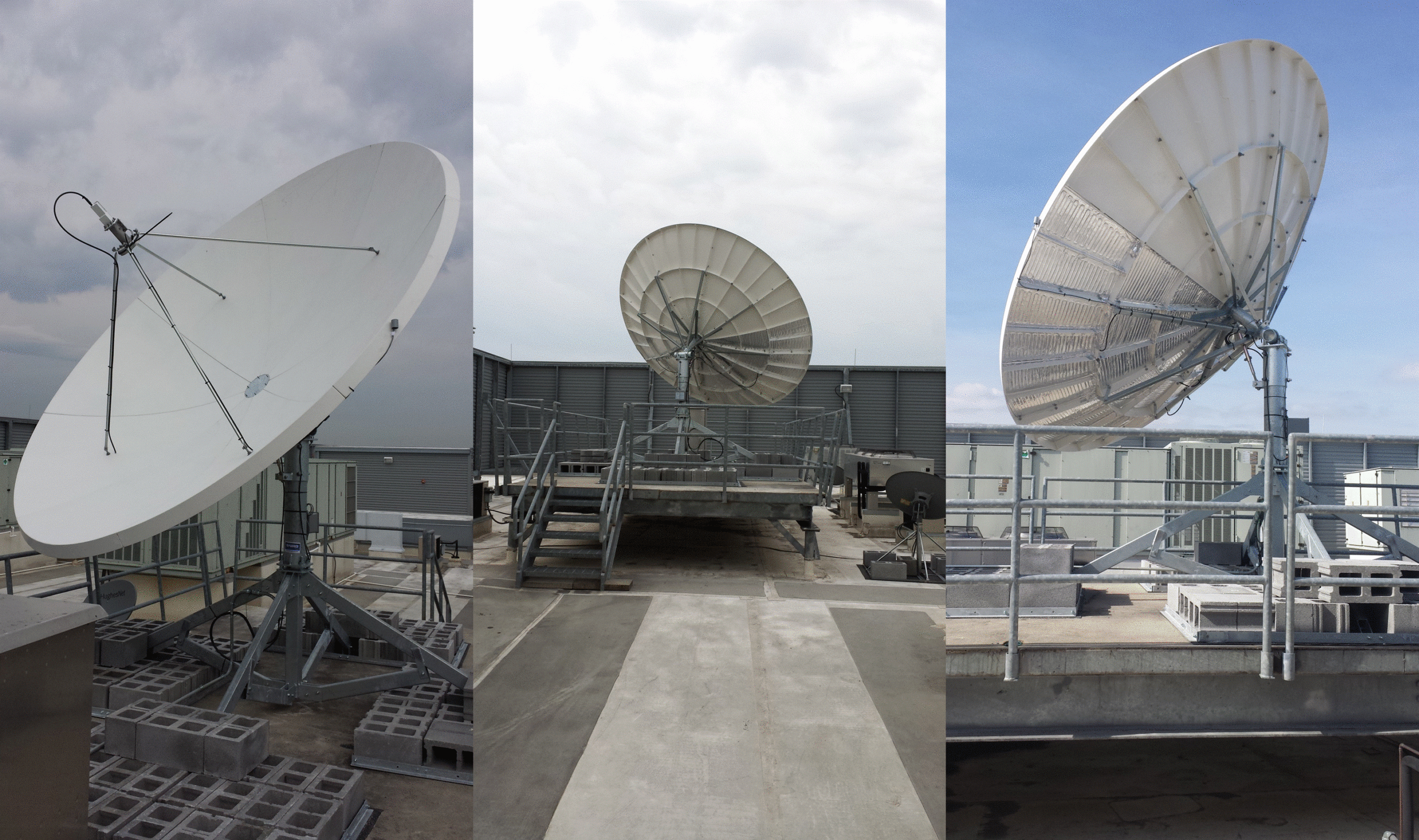NOAAPORT Installation at UMD M-Square
By: Scott Rudlosky
Following nearly three years of coordination, a NOAAPORT Satellite Broadcast Network (SBN) antenna, receiver, and server have been installed at the University of Maryland. A 3.7 meter antenna now sits atop the M-Square Building which hosts the Earth System Science Interdisciplinary Center (ESSIC) and the Cooperative Institute for Climate and Satellites (CICS-MD).
The NOAAPORT will provide nearly identical feeds to those received at National Weather Service (NWS) Weather Forecast Offices, allowing CICS-MD to simulate operational forecasting environments for the first time. This capability is integral to the new CICS-MD Proving Ground and Training Center (PGTC), which promotes interactions between atmosphere and ocean scientists, students, and forecasters. CICS-MD helps to develop and visualize new and existing weather and water products within the operational NWS software (AWIPS). Education and training materials also are developed using a combination of e‑learning modules, training quick guides, seminars, weather event simulations, and special case studies. These proving ground activities help promote the use of satellite products among operational forecasters, and allow for direct collaborations between CICS-MD students/scientists and operational forecasters.
Two NOAA satellite programs (JPSS and GOES-R) have provided initial support for developing the PGTC infrastructure to promote sustained interaction between JPSS/GOES-R algorithm developers and end users for training, product evaluation, and solicitation of user feedback. Implementation of the operational AWIPS software at CICS-MD coincides with development of similar capabilities just 2.5 miles away at the UMD Department of Atmosphere and Ocean Sciences (AOSC). Graduate and undergraduate students will cross-populate these efforts, greatly benefiting both parties, and providing valuable educational and training opportunities for UMD students. The result will be skilled graduates with remote sensing experience ready to staff future NOAA and NASA activities.








